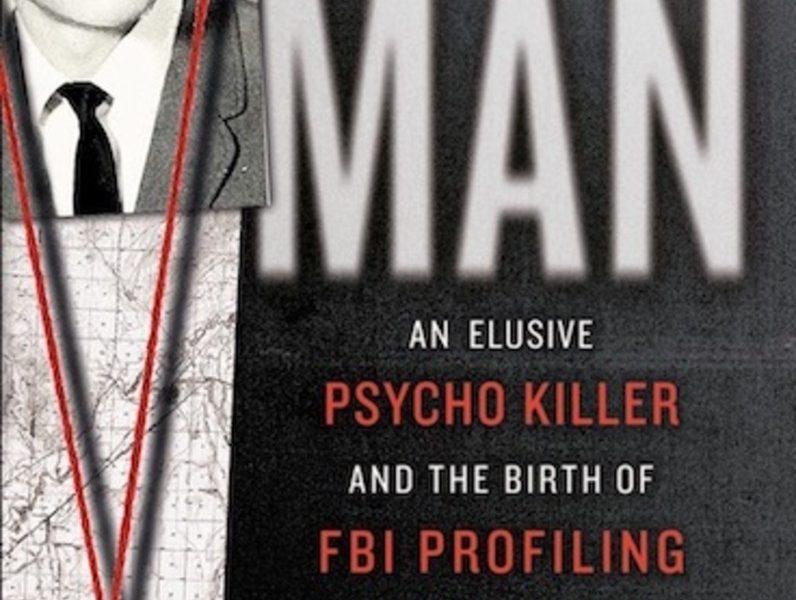10 Myths of Writing About Crime
So, you wanna be a crime writer?
(Ron Franscell: On the Secret to His Writing Success)
Between your gullibility, urban legends, and Hollywood, you’ve swallowed a lot of, um, bunk about crime, cops, and courts. You’ve consumed so much crapola that I’m surprised you aren’t already on Ducky’s slab. Fabrications, fables, and fairy tales about forensics and felonious foolishness (not to mention wrongful alliteration) abound. You’ve probably accepted them as gospel since the first season of “Starsky and Hutch.”
So whether you intend to write the Great American Crime Novel or a true crime that actually rings true, you should know some of the facts about fictions.
Myth #10: Criminal profilers catch bad guys.
FACT: TV has really messed up crime-fighting. It treats profilers as half clairvoyant and half SWAT team. Profiling ain’t anywhere near as glamorous as “Criminal Minds” wants you to believe.
Profilers never finger actual bad guys; profiling merely helps investigators narrow the pool of suspects—a little. It’s more like this: Psychology experts who know something about crime-scene investigation are invited to study somebody else’s case file then deliver a list of psychological and behavioral traits their “unknown subject” (UnSub) probably exhibits. They take some questions and then they leave. Real cops with real guns then hunt for the criminals.
Is profiling magical? Nope. Profiling is part logic, part data, and part guesswork. They’ve read thousands of interviews with homicidal maniacs on the off-chance they find some commonalities. The best profilers are uncanny, but the real job is very brainy and doesn’t require stunt doubles.
MYTH #9: Serial killers run rampant.
FACT: Every year, between 15,000 and 20,000 people are murdered in the U.S. Of those homicides, only about 1% are committed by serial killers, according to FBI statistics. By comparison, 13% of all murders are committed by the victim’s own family. The lesson is clear: You’re screwed if you marry a serial killer.
Myth #8: You have a right to one phone call.
FACT: Not necessarily. You have certain constitutional rights when you’re arrested, but not a phone call. At last count, only 11 states grant an arrested suspect either a right to one phone call or to communicate with a lawyer or loved one upon booking. In other states, it’s a decision left to a city or county to set its own policies. And that goes for texting, too. And definitely for sexting.
Myth #7: Cops are laid back and glib at grisly crime scenes.
FACT: It makes for interesting TV when a detective or medical examiner blithely sips his Starbucks and wisecracks with his partner while examining a dismembered corpse. But cops are people, too. No matter how many bloody crime scenes they’ve worked, the horror of slaughtered people—especially kids—always affects them. Crime scenes are grisly, murders are ugly. No matter how many crime shows you’ve watched, nothing on TV compares to the real thing. Good cops learn to compartmentalize the revulsion, but that doesn’t mean it has no effect. Think you’re tougher than all that? Take a whiff of a decomposing body and keep your lunch down. I dare you.
IndieBound | Bookshop | Amazon
[WD uses affiliate links.]
Myth #6: You might wake up in a bloody tub missing your kidneys.
FACT: You’ve heard the story at a cocktail party, right? A friend of somebody’s cousin’s hairdresser got drunk in a crowded bar and met a hottie. Things get randy and they get a room. Then the guy wakes up in the hotel bathtub, immersed in icy water, with a note on the toilet: “We’ve taken your kidneys. Call 911 or die.”
It’s an urban legend. It has never happened to anybody. A hoax. And everybody knows your heart is worth more in the global organ black market.
Myth #5: Cops have fabulous computers, databases, and fancy war rooms.
FACT: No, they don’t. Maybe their computers are better than yours, but they still freeze up. Nobody has the glitzy, big-screen murder boards and super-databases where, with a few clicks, they can learn what toppings you had on your pizza last Friday.
It’s a TV fantasy. Sorta like the quirky TV forensic chicks who can zoom in on surveillance video to see the species of bugs on a speeding car’s windshield. Almost no law enforcement agency has the cash or tech savvy to do what you see on a typical prime-time cop show. Just imagine how Barney Fife’s life would be different today if Mayberry had a Penelope Garcia.
Myth #4: Medical examiners are precise about when you died.
FACT: Nope. “Time of death” is a best guess. We often see TV coroners and medical examiners quickly poking a liver, which always seems to provide a more or less precise determination of when the guy died. Look, TV has only 47 minutes or so (with those annoying commercials) to solve a case, so the writers can’t waste precious seconds with science-y stuff. There’s just no time for actors to do the real tests to determine a body’s approximate expiration, such as body temperature, rigor mortis, lividity, decomposition, stomach contents, cloudiness of the corneas, potassium levels in eyeballs, insect activity, and crime-scene artifacts.
Myth #3: Typing your PIN backwards at the ATM will summon the cops.
FACT: Nope. Another urban legend. Think about it: If somebody’s holding a gun to your head, how likely are you to even remember your PIN frontwards, much less backwards? Even if your ATM alerted cops, the bad guy would likely be long gone with your money and you’d be dead before they arrived. And wouldn’t robbers get wise about all that fumbling around? Here’s a test: On your iPhone, thumb-type the last four digits of your Social Security number backwards … then text it to me.
Myth #2: Lie detectors detect all lies.
FACT: Nope. Too many factors prevent polygraph examinations from being infallible. The questions, the skill of the examiner, even the quality of the machine all play a role. In fact, even if you know nothing about beating a lie-detector test, you have better than a one in 10 chance of randomly passing when you’re lying your ass off.
Myth #1: DNA is precise and infallible.
FACT: It’s pretty cool but reports of DNA’s effectiveness are greatly exaggerated by … wait for it … TV. The illusion is so complete that there’s something called the “CSI Effect,” which causes a lot of jurors and judges in real-life criminal trials to believe DNA is incontrovertible evidence of guilt (or that its absence is a major forensic and prosecutorial failure). Fact is, fewer than 1% of all major crimes like murder, rape, and assault are solved with DNA. Old-fashioned fingerprints actually provide slightly better evidence.

Do you love reading a good mystery? Have you always wanted to write one? During the Essentials of Mystery Writing course, you’ll have the choice of creating a brand new mystery story from scratch or working with a story you already have in progress. Spend six weeks on your craft while receiving feedback from a published mystery author!



